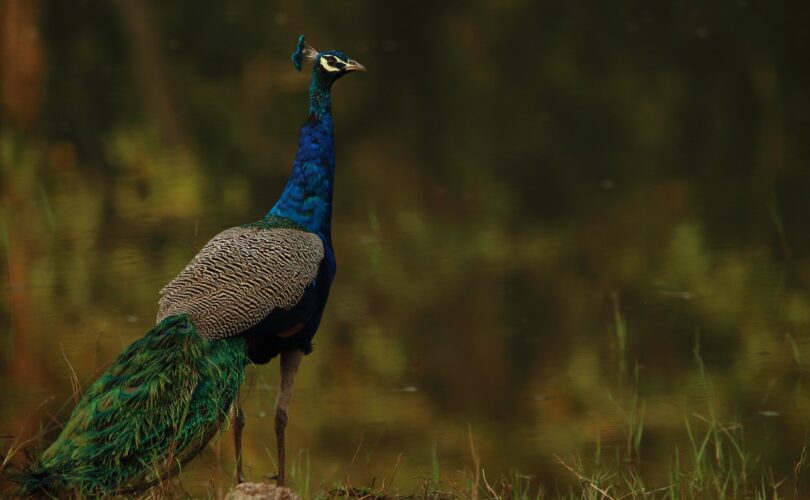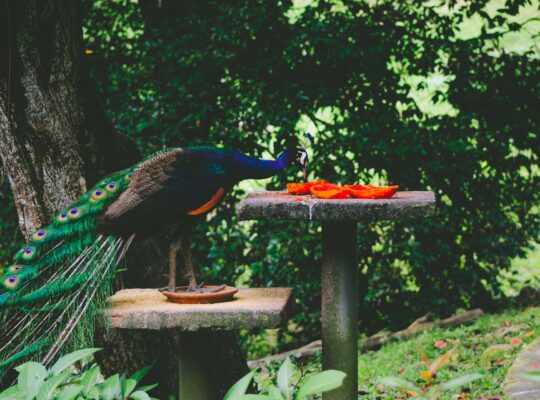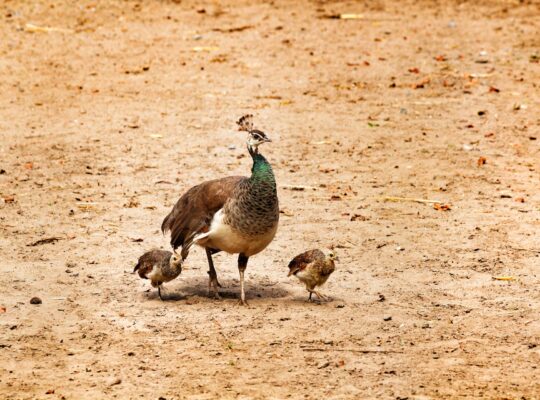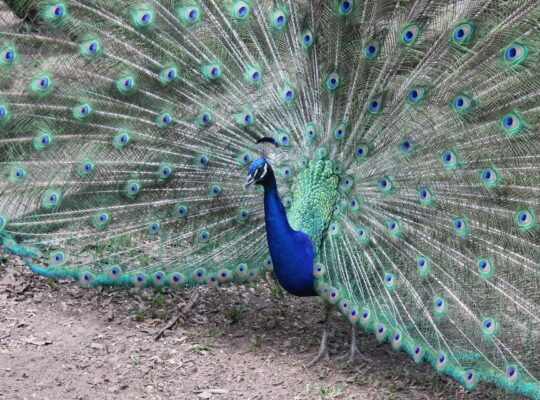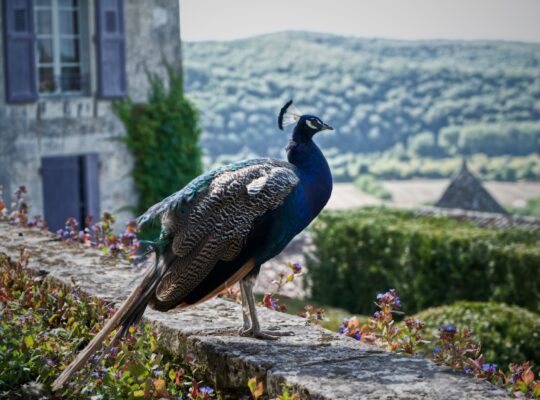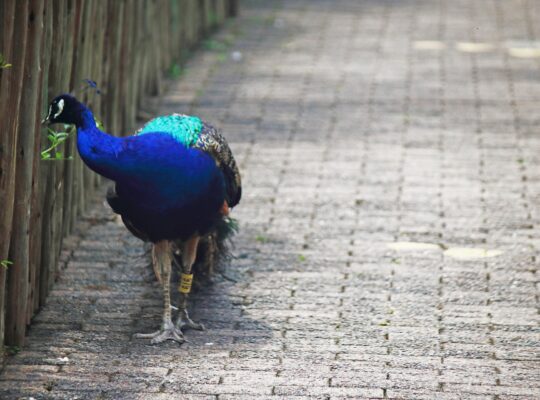During the day, peacocks have sharp eyesight that allows them to discern colors and details easily. Due to a lower ratio of rod cells to cone cells in their eyes, night vision is impaired. The lack of a dense population of rod cells in their eyes makes them less sensitive to dim lighting than a cat or an owl. Peacocks’ poor night vision is compounded by the lack of the reflecting coating seen in the eyes of most other animals.
Peacock eyes are not designed for night vision. Peacocks have a restricted number of rod cells in their retina that sense low light levels. Rod cells are not as sensitive to color as cone cells, which are more plentiful in peacocks’ eyes. Peacocks’ eyes also lack a reflecting coating called the tapetum lucidum, which helps animals like cats and dogs see at night.
As a result, peacocks depend heavily on their hearing to identify possible predators at night. Their ears are on each side of their skull and are covered with feathers to protect them from harm. Peacocks may also utilize their sense of touch to navigate their environment in the dark because they have delicate whisker-like feathers called filoplumes around their beak and eyes.
Peacocks are also diurnal creatures, which means they are active during the day and sleep at night. Throughout the night, they usually perch in trees or other high places to escape predators.
Whereas peacocks lack night vision, they have a superb daytime vision. They use their hearing and tactile senses to explore their environment and escape predators at night.
What Does A Peacock Do At Night?
Peacocks are diurnal, meaning they are most active during the day and sleep at night. Peacocks begin to prepare for the night after the sun sets. They usually roost in trees or other lofty sites to evade predators like wild cats and dogs. Roosting in trees also protects them from ground-dwelling predators like snakes and foxes.
Peacocks are friendly birds that generally rest in small groups, with males and females sharing the same roosting place. They like to perch on high trees where they can see and hear any possible predators from afar. Peacocks can sleep while perched on a branch because they have specific leg muscles that allow them to lock their toes around the branch. This enables them to rest their bodies and save energy while firmly grasping the branch.
Peacocks utilize the cover of night to travel to new regions, look for food or water, flee from predators, and roost. They use their excellent sense of hearing and whisker-like filoplumes to detect movement in the air to navigate their environment.
Peacocks utilize the shelter of darkness for preserving energy as well. Peacocks are busy throughout the day, using much energy searching for food, mating, and exhibiting their plumage. They use the nighttime hours to relax and preserve energy for the next day.
Peacocks can sleep at night because of their particular structure. They hide their heads behind their wings to stay warm and to shield their eyes from strong lights or moonlight. Also, their brain activity during sleep differs from that of humans.
Peacocks sleep in a condition known as unihemispheric slow-wave sleep, in which one hemisphere of the brain sleeps while the other stays attentive. This helps people be aware of their environment while obtaining the rest they need.
Overall, peacocks are highly adapted to their environment, and their abilities to roost in trees, migrate, and save energy at night are just a few techniques they utilize to live and prosper.
How Many Hours Does A Peacock Sleep?
The quantity of sleep a peacock requires depends on characteristics like age, health, and ambient circumstances. Peacocks need 10 to 12 hours of sleep every day on average. They do not, however, sleep for long periods like humans since they must stay vigilant for prospective predators.
Peacocks, unlike humans, do not have a traditional sleeping schedule since they may relax and sleep in brief bursts throughout the day and night. During the day, they may slumber while sitting on a limb, with their heads tucked behind their wings, or roaming about on the ground. They sleep on trees or other lofty spots at night and may sleep for a few minutes to several hours.
Peacocks can sleep while perched on a branch because they have specific leg muscles that lock their toes around it. This enables them to rest their bodies and save energy while firmly grasping the branch. They also hide their heads behind their wings to stay warm and shield their eyes from bright lights like moonlight.
Peacocks’ sleeping habits are impacted by their surroundings and daily activities. Peacocks are sleepless in the wild during the breeding season because they are busily mating and exhibiting their plumage to attract mates. They may also sleep less during drought or food shortage since they must stay vigilant to obtain food and water.
Peacocks in captivity may have distinct sleeping habits from those in the wild. They may have a more regular sleeping schedule if housed in a stable habitat, such as a zoo or wildlife park. They may, however, have disturbed sleep owing to environmental variables such as noise or interruptions from visits.
Peacocks need between 10 and 12 hours of sleep each day, although their sleep cycles are less regular than those of people. In conclusion, peacocks’ sleeping habits are less predictable than those of humans. They can doze off for brief stretches throughout the day and night, depending on the circumstances of their surroundings and the activities they engage in. Because of the specific leg muscles and the ability to bury their heads behind their wings, they can sleep safely perched on a branch. The sleep habits of peacocks may be altered by various circumstances, including the time of year (breeding season), food availability, and the environment’s state (captivity).

